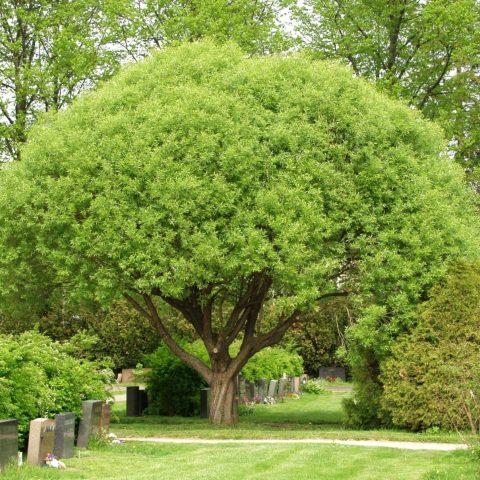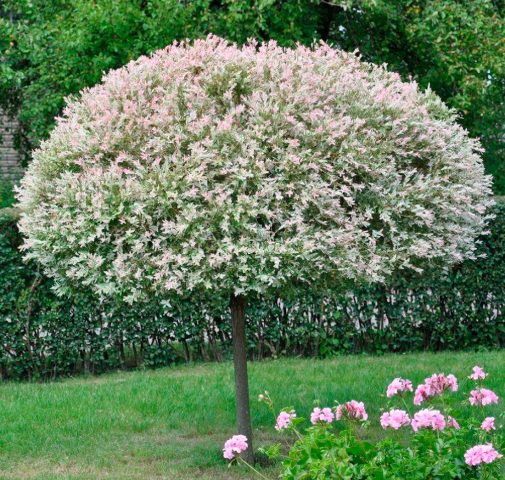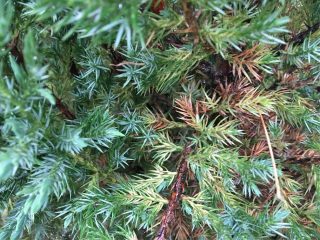Content
Globe willow is a group of trees with an oval, symmetrical crown. It combines many representatives from dwarf trees with a height of 1-2 m to real large trees with a height of 15-20 m. The trees are unpretentious in their care and require regular watering and rare fertilizing. The basic rules of cultivation are described in detail in the article.
Description of globular willow
The globular willow is a fairly tall tree, reaching a height of 7 m, and often 15-20 m. Moreover, the parameters strongly depend on the variety, because there are also dwarf representatives up to 2 m in height.
Globe willow produces green foliage with hints of glaucous and silver. In autumn it turns yellow, the border becomes red, which adds additional attractiveness. Inflorescences-catkins appear on the branches early, even before the formation of leaf plates.

Willow has a spherical crown, which is where its name comes from.
It has a regular oval shape, spreads widely on the sides, so it takes up a lot of space. At the same time it looks very beautiful. Willow gives rapid growth and feels good even on depleted soil.However, it may suffer from strong winds, especially in autumn. The branches are brittle and can fly off due to a draft.
Types and varieties
Among the types of globular willow, several representatives can be distinguished:
- whole leaf;
- purple;
- eared;
- dwarf;
- tortuous;
- brittle.
The whole-leaved globular willow is represented by the popular variety Hakuro Nishiki. This is a Japanese variety, which stands out quite strongly from the rest of the representatives. It produces pink and white leaves that bloom in the spring. Moreover, over time they acquire the usual green color, and in the fall they turn yellow.

The tree is not too tall, but beautiful, reaches 3 m
The crown of the globular willow is spreading, also about 2-3 m. A characteristic feature is that the catkins smell of hyacinth.
Purple globular willow is represented by a small shrub up to 2-3 m. Its name is associated with beautiful bright red catkins. During the flowering period, the tree looks especially beautiful. The crown is round, symmetrical, spreading up to 2 m wide. The foliage is gray-green, on the inner parts of the branches - lemon and orange. As the weather gets colder, the willow turns golden.

Eared willow is also represented by a small shrub, which often reaches only 0.5-1 m, but can be 1.5-2 m
Gives a lot of branches. Young shoots are pubescent, and at the age of one year they already become naked and acquire a reddish-brown tint. Earrings appear along with the leaves or a little earlier.
Dwarf varieties of spherical willow are a large group of small trees, the height of which ranges from 50 cm to 2 m, less often up to 3 m. These are very unpretentious plants; in nature they are found in the forest-tundra and subpolar regions. Among the most popular representatives of this group are:
- creeping;
- hairy;
- Swiss;
- blueberry;
- rocky;
- alpine and others.
The twisting globular willow got its name because of the characteristic shape of its shoots. They have a red-brown color, which adds additional decorativeness. The crown is oval, symmetrical. The leaves are narrow, also twisted, quite long (up to 10 cm). Earrings appear already in April. The tree is not very tall, reaches 4 m in height and up to 2 m in width. It produces varieties such as Matsuda and Sverdlovskaya (also called Uralskaya).
The description of the globular willow brittle states that it is a very large tree with an oval crown with a diameter of up to 5 m. The leaves are lanceolate, up to 7.5 cm long, and slightly more than 1 cm wide. The bark is grayish, with pronounced brown tints cracks on the surface. Brittle willow is common in Russia. It can be found in neighboring European and Asian countries.
Planting willow globulus
Planting of bush spherical willow is planned for April or September. The location is chosen based on several criteria:
- good lighting, no shadow;
- elevation (lowlands should be excluded);
- lack of high groundwater.
Willow is not too picky about the soil. The tree grows normally even on poor soils. But to make it look as lush as possible, it is recommended to add compost or humus in the amount of 8-10 kg per 1 m2 when digging.2.
During landing, proceed as follows:
- Dig several holes 60x60 cm at a distance of 1 to 6 m (depending on the variety).
- Place a layer of small stones on the bottom.
- The willow seedling is rooted and covered with soil.
- Compact so that the root collar remains level with the surface.
- Water with a bucket of settled water.
- If planting was done in the fall, shortly before frost the tree trunk circle is mulched.

Globe willow is grown in sunny areas, partial shade is allowed
Caring for globular willow
Caring for the crop is not so difficult. Willow is an unpretentious tree that can easily withstand even severe frosts and wind. May be partially affected by drought, so regular watering is required. The basic rules for growing willow are described in the following sections.
Pruning willow
One of the most important rules of care is regular pruning of the globular willow. Every spring, before the sap begins to flow, it is necessary to remove frozen, dry, broken and old branches. In October, after leaf fall, formative pruning should be carried out, removing too long shoots. A similar procedure is carried out in the summer to prevent the crown from growing and the tree losing its attractiveness.
Watering
Willow should be watered as needed and depending on its age. If young seedlings are given water weekly, then adults - once a month (based on rainfall and soil conditions). Pour it into the tree trunk circle, and first settle the liquid.
It is equally important to regularly remove the young shoots of globular willow, because otherwise it can grow throughout the entire trunk circle and even beyond.
Top dressing
To grow a beautiful spherical dwarf willow, as in the photo and in the description, you also need to fertilize. This can be done 1-2 times during the season. So, in April they give ammonium nitrate or urea (20 g per 1 square meter).Instead, you can add a complex fertilizer, for example, azofoska. In early autumn, willow needs wood ash. At 1 m2 150-200 g will be required.
Reproduction of willow globulus
Round spherical willow is propagated mainly by cuttings. It is worth preparing them in the fall, cutting last year’s shoots up to 15 cm long. They are stored in sand or peat, periodically moistened (the room temperature should be consistently positive at 5-10 degrees).

In the spring in May, cuttings of globular willow are placed for a day in a solution of a growth stimulator, for example, “Zircon”
Then they are transferred to open ground, digging halfway into fertile soil. Cover with a transparent jar, continue to water and apply complex fertilizers. Then, at the beginning of autumn, they are moved to a permanent place and mulched for the winter.
Another drawback is that new trees may not retain all the characteristics of the mother tree.
Willow globular in landscape design
In garden design, spherical willows look especially beautiful. They produce very unusual crowns with drooping branches that resemble a green fountain. The spherical tree can be used both in single plantings and in compositions. It decorates recreation areas well (next to the bench, gazebo), and looks beautiful against the backdrop of the lawn. Several options for using culture in garden design are presented below:
- Landing along the road.
- Single occupancy.
- On the shore of a reservoir.
- Against the backdrop of a lawn.
Conclusion
Ball willow is suitable for landscaping both large and small gardens. The plant is winter-hardy and can be grown in different regions of Russia.To quickly gain green mass in the spring, it is recommended to fertilize with nitrogen and then periodically water.
Reviews of willow globulus












